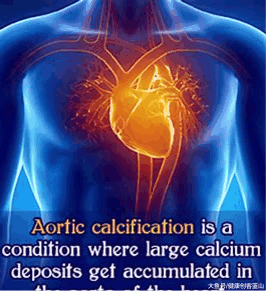哈佛副教授:血管钙化是心脏病的主要诱因
Novel marker and possible therapeutic target for cardiovascular calcification identified
上图:主动脉钙化是大量的钙沉积在主动脉的病理改变
2014年3月13日,布莱根妇女医院
心血管钙化(心脏瓣膜和血管中的矿物质沉积)是心脏病的主要诱因,美国疾病控制和预防中心(CDC)称,心脏病是美国男性和女性死亡的主要原因。
上图:动脉壁的钙沉积
“不幸的是,目前还没有针对心血管钙化的治疗,从而导致急性心血管事件,如心肌梗塞、中风、心脏衰竭,” 艾琳娜Aikawa博士说, 她是心血管科学布莱根妇女医院跨学科中心血管生物学项目主任(BWH)和哈佛大学医学院的医学副教授。“我们还没有找到一种方法来逆转或减缓这种疾病的进程,它与衰老和常见的慢性疾病有关,比如动脉粥样硬化、糖尿病和肾病。”
日本制药公司BWH和Kowa公司(BWH and Kowa Company, Ltd.)的一组研究人员在爱川博士的带领下,在破骨细胞(骨的前体)中发现了某些蛋白质,这种蛋白质可以通过溶解矿物质沉积来帮助破坏心血管钙化。
这项研究发表在2014年3月的《动脉硬化、血栓和血管生物学》杂志上,它为心血管钙化患者提供了一个潜在的治疗途径。
成熟的破骨细胞通常不存在于血管中。使用无偏见的全球蛋白质组学(蛋白质研究),研究人员能够检测血管系统中的破骨细胞,以确定哪些蛋白质诱导破骨细胞形成。他们鉴定了100多种与破骨细胞发育相关的蛋白。后续研究验证了6种候选蛋白,它们作为可能的药物靶点,可能有助于促进血管中破骨细胞的发育。
Aikawa博士说:“为了推进这项研究,我们需要进一步了解为什么在心脏瓣膜和血管活跃钙化的情况下,破骨细胞并不普遍,并确定血管钙化与骨钙化的区别。”“然后,我们可以研究在血管中形成破骨细胞的方法。”
进一步探索:控制血管中的钙积累可能提供一种治疗心脏病的新方法
上图:冠状动脉钙化
https://s.click.taobao.com/dWJDNNw
Novel marker and possible therapeutic target for cardiovascular calcification identified
March 13, 2014, Brigham and Women's Hospital
Cardiovascular calcification (deposits of minerals in heart valves and blood vessels) is a primary contributor to heart disease, the leading cause of death among both men and women in the United States according the Centers for Disease Control and Prevention (CDC).
"Unfortunately, there currently is no medical treatment for cardiovascular calcification, which can lead to acute cardiovascular events, such as myocardial infarction and stroke, as well as heart failure," says Elena Aikawa, MD, PhD, Director of the Vascular Biology Program at the Center for Interdisciplinary Cardiovascular Sciences at Brigham and Women's Hospital (BWH) and Associate Professor of Medicine at Harvard Medical School. "We haven not found a way to reverse or slow this disease process, which is associated with aging and common chronic conditions like atherosclerosis, diabetes, and kidney disease."
Led by Dr. Aikawa, a team of researchers at BWH and Kowa Company, Ltd., a Japanese pharmaceutical company, has discovered certain proteins in osteoclasts, a precursor to bone, that may be used in helping to destroy cardiovascular calcification by dissolving mineral deposits. The research, described in the March 2014 issue of Arteriosclerosis, Thrombosis, and Vascular Biology, suggests a potential therapeutic avenue for patients with cardiovascular calcification.
Mature osteoclasts are not typically found in the vasculature. Using unbiased global proteomics (study of proteins), the researchers were able to examine osteoclast-like cells in the vasculature to determine which proteins induced osteoclast formation. They identified more than 100 proteins associated with osteoclast development. Follow-up study validated six candidate proteins, which serve as targets for possible medications that may help promote osteoclast development in the vasculature.
"To advance this research, we need to further understand why osteoclasts are not prevalent in the vaculature, despite active calcification of the heart valves and blood vessels, and determine the difference between calcification in vasculature compared with calcification in bone," said Dr. Aikawa. "Then, we may examine ways to form osteoclasts in the vasculature."
Explore further: Manipulating calcium accumulation in blood vessels may provide a new way to treat heart disease
More information: atvb.ahajournals.org/content/34/3/626.abstract
Novel marker and possible therapeutic target for cardiovascular calcification identified
https://medicalxpress.com/news/2014-03-marker-therapeutic-cardiovascular-calcification.html




.png)